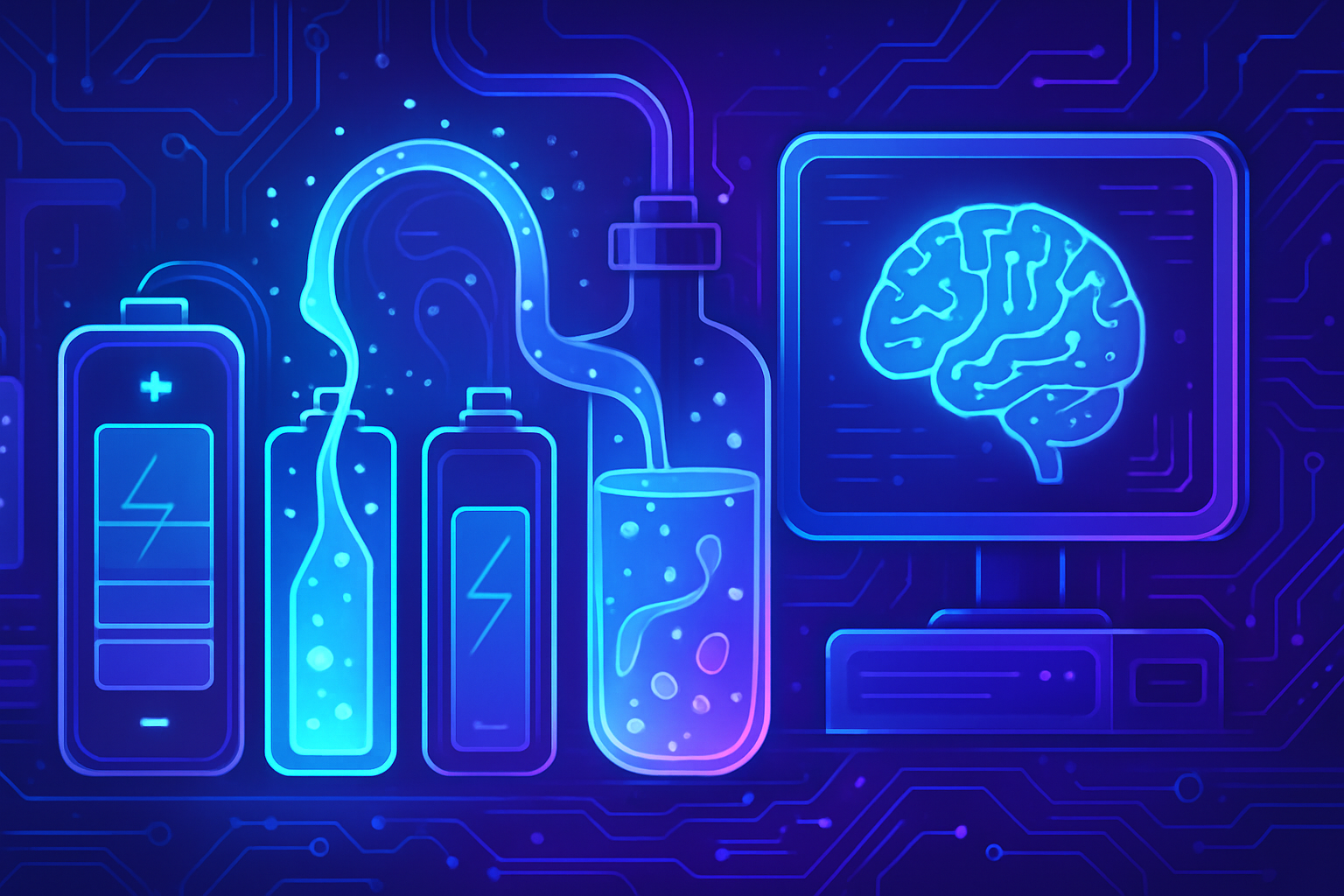Batteries, vital elements of modern technologies, require constant innovations to maximize their efficiency. *The quest for optimal performance* now relies on advanced methods such as the use of electrolyte additives. AI positions itself as an essential player, *revolutionizing research* by providing targeted solutions for additive selection. *Optimizing electrochemical interfaces* proves essential for ensuring increased longevity and energy capacity of batteries, all while reducing the cost of research processes.
New approaches in electrolyte design
Recent research conducted by the Argonne National Laboratory, affiliated with the Department of Energy of the United States, is transforming lithium-ion battery design. Scientists are adopting a data-driven approach to optimize electrolyte additives intended for LiNi0.5Mn1.5O4 batteries, commonly referred to as LNMO batteries. These batteries, known for their high voltage, benefit from a new paradigm aimed at improving efficiency and longevity.
Optimization through machine learning
Machine learning models enable the analysis of combinations of electrolyte additives to predict their impacts on battery performance. By training these models on existing data, researchers quickly identify innovative solutions. This method, funded by federal programs, provides an effective alternative to traditional experimental methods.
With a dataset comprising 28 diverse additives, the team was able to map the chemical structures of each additive to battery performance. This allowed them to effectively predict the impact of 125 new additive combinations, thereby avoiding nearly four to six months of costly experimentation.
Challenges associated with LNMO batteries
LNMO batteries present unique challenges. Operating at a voltage significantly higher than that of ordinary batteries, they reach 5 volts, a threshold that could lead to material decomposition. The stability of the electrolyte is tested in an energized state, revealing the need for innovation in electrolyte additives.
Researchers found that an ideal additive decomposes during the initial charge cycles, thereby establishing a stable interface. This structure helps reduce resistance, leading to a notable improvement in the battery’s energy capacity. The economic consequences of this approach are also positive, as battery manufacturing methods are already well established.
Return on investment in research
The use of machine learning seeks not only to reduce research time but also to minimize associated costs. Preliminary results show that new combinations of additives outperform their predecessors in terms of performance and efficiency, thus reaffirming the potential of this technology.
Scientist observe that implementing this method leads to improved energy storage solutions, advancing the field of batteries. Industry professionals are beginning to view these machine learning models as a standard in future research.
The future of batteries and their design
Ongoing research shows that adopting machine learning techniques for the design of electrolyte additives could contribute to the evolution towards more efficient batteries. The optimization of materials should become a central aspect, stimulating innovation and reducing dependence on critical materials such as cobalt.
Future projects may integrate this methodology for other battery systems, thus broadening the horizon of possible applications. The integration of new technologies and the prescription of suitable electrolyte additives open promising avenues for energy sustainability.
Frequently Asked Questions
What is an electrolyte additive and how does it improve battery performance?
An electrolyte additive is a substance added to a battery’s electrolyte to enhance its performance. These additives help stabilize interfaces, reduce resistance, and increase energy capacity, resulting in better efficiency and increased longevity of the batteries.
How does AI help discover new combinations of electrolyte additives?
AI uses machine learning models to analyze data from known additives and predict which combinations may enhance battery performance. This allows for rapid identification of promising candidates without the need for numerous lengthy and costly experimental tests.
What are the main advantages of LiNi0.5Mn1.5O4 batteries?
LiNi0.5Mn1.5O4 batteries, or LNMO, offer high operating voltage, superior energy capacity, and eliminate the need for cobalt, which reduces supply chain concerns. This makes them a more sustainable and efficient alternative compared to other traditional batteries.
How does an additive help limit decomposition in high-voltage batteries?
An ideal additive formed during the initial cycles of the battery creates a stable interface on the electrodes, limiting material decomposition under high voltage conditions. This decreases resistance and preserves the energy performance of the battery.
Why is it complicated to select the right electrolyte additive?
Selecting the right additive is complex due to the diversity of available options, with hundreds of possibilities. This requires considering the chemical structures and their potential impacts, which is a laborious process without the advanced analytical tools provided by AI.
What are the time and resource savings when using AI for additive research?
Using AI significantly reduces the number of experimental trials needed. By predicting the performance of new additive combinations, researchers avoided 125 costly tests that would have taken several months and substantial material investments.
How to determine if an additive is effective for a particular battery?
To evaluate the effectiveness of an additive, researchers map its chemical structure to the observed performance in the battery system. This involves analyzing various descriptors of the additive molecules to predict their impact on performance.






